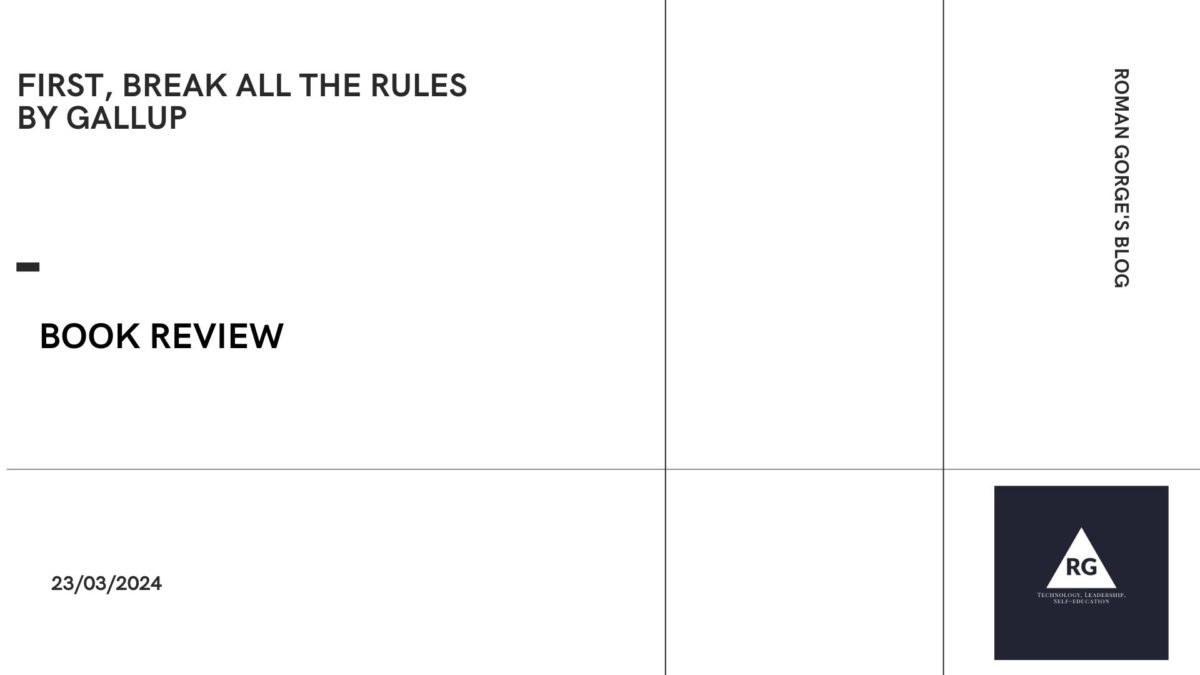My career as a people manager started several years ago at Amazon. Folks way smarter than I am developed Amazon’s best practices and processes how to lead people. After reading the “First, Break All The Rules” book, I can certainly say that they were inspired by it in many cases.
In the ocean of management literature, this book challenges the “conventional wisdom”. Or how authors define it – widely accepted management practices and beliefs that prioritize uniformity and correcting weaknesses over individual strengths. Authored by Gallup, the book is the culmination of decades of research, summarizing the essence of what makes great managers and what great managers do differently.
One of the book’s most interesting insights for me was its detailed exploration of the twelve questions that gauge the emotional engagement of employees. These questions serve as a practical toolkit for managers, offering an understanding of what drives satisfaction and performance in the workplace. The answers on these 12 questions help a manager to see an employee’s perspective on four key areas: “What do I get?”, “What do I give?”, “Do I belong here?” and “How can we all grow here?”.
The book also provides clear definitions of what is talent vs skill vs knowledge. Talents are defined as naturally recurring patterns of thought, feeling, or behavior that can be productively applied. Skills are the steps of an activity; these are capabilities that can be learned or acquired through training. Knowledge encompasses the facts and lessons learned, including both factual knowledge (know-what) and experiential knowledge (know-how). This framework helps differentiate the innate abilities (talents) from what can be taught or developed (skills and knowledge), emphasizing the importance of leveraging natural talents in the workplace.
Many ideas and methodologies about employees emotions I found in the book are used in some way of form in modern workplaces. And this is good. I believe that is more effective to identify the few emotions you want your employees to feel and then hold managers accountable for creating these emotions.
Awarding “First, Break All The Rules” a 5 out of 5, I recommend it as an essential read for those who want to dive deep into people managers main job – how to convert talent into performance.

Roman, thanks for this review. The fact that this was initially released 25 years old and it is still, if not even more relevant today, speaks volumes about how timeless and well-recognised the contents are. Talent-based hiring and focus on strengths have luckily been what was passed onto me, and that I have organically adopted into my own leadership style and tenants.
I am aligned to your conclusion around, using my own words here: “less is more”; identifying those few emotions that make the employees come to work with passion for the customers, themselves and their colleagues. Regardless of role, it almost always start with our most basic need; to understand “what’s in it for me?”.
I found that as long there is clarity around compensation and development areas, other conversations re. for example purpose and expectations are much easier to have.
Just my 2 bits worth. 🙂